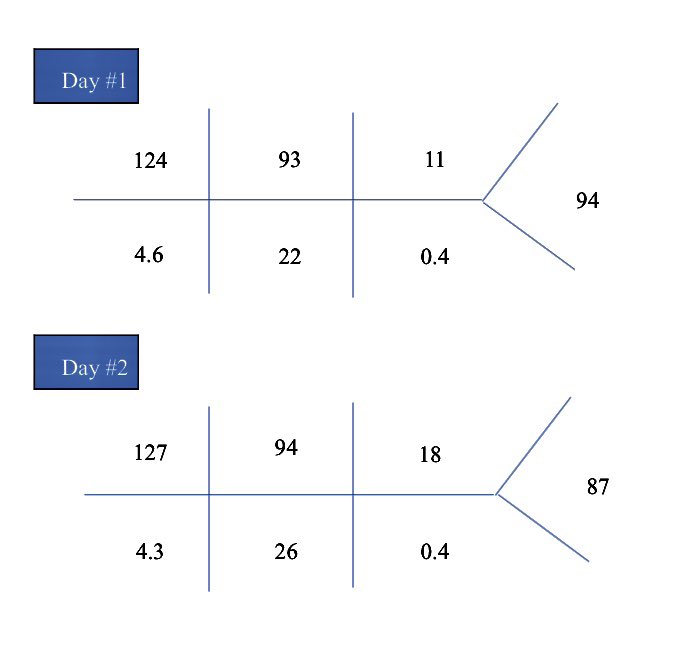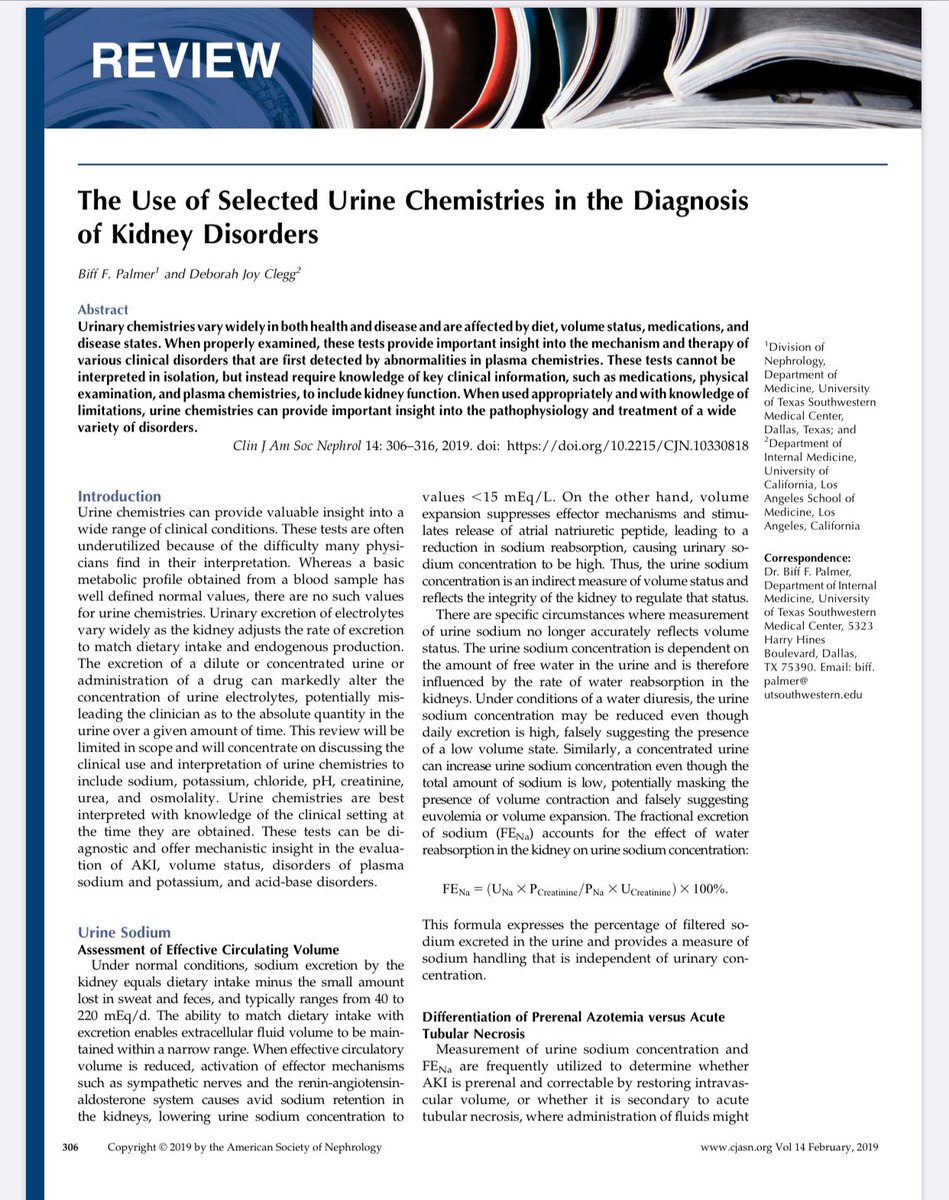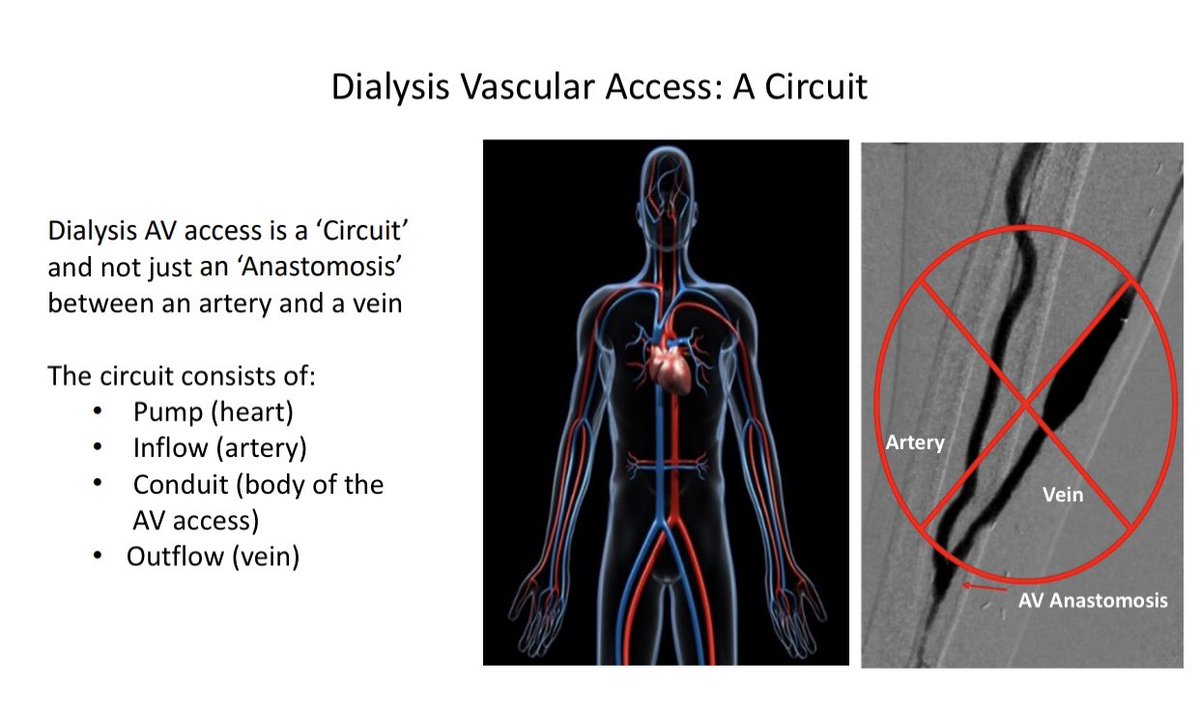⚡️It is cool to see the ⬆️ in Plasma Sodium be close to the predicted value based on our calculation
⚡️Let’s review the case
💥An elderly man with metastatic cancer presents with Hyponatremia
1/
⚡️⬇️ Plasma Osmolality
⚡️Euvolemic
⚡️⬆️ Urine Osmolality
⚡️⬆️ Urine Na
⚡️Normal Uric Acid, TSH, Cortisol
⚡️On no medications that ⬆️ ADH
2/
⚡️Plasma Na =124 mEq/L
⚡️Urine Output/24 hrs = 1 L
⚡️Urine Osm. = 604 mOsm/kg
⚡️Wt = 59 kg
⚡️TBW = 35 L (0.6 x 59 kg)
💥Urine Osmolality x Urine Volume = Urine Solute Excretion
⚡️604 mOsm/L x 1L= 604
⚡️Pt’s daily solute excretion is 604 mOsm
3/
💥 30 grams of urea = 500 mOsm
(In comparison:
6 grams of salt tabs = 205 mOsm)
4/
Daily solute excretion =
604 + 500 = 1104 mOsm
5/
Daily Urine Solute Excretion/ Urine Osm. = Urine Volume per day
Let’s plug in the numbers:
1104 mOsm/ 604 = 1.8 L
UO on Day # 2 is 1.8L‼️
6/
⚡️Edelman Equation:
Plasma Na = Na(e) + K(e)/TBW
-Na(e) is exchangeable Na
-K(e) is exchangeable K
-TBW is Total Body Water
7/
Day # 1 into the equation first:
Day # 1
Plasma Na = Na(e) + K(e)/TBW
124 = Na(e) / 35
Na(e) = 124 x 35 = 4340
8/
So what would be the change in TBW?
35L plus water intake (1.5L in this patient) minus 1.8L (urine output) minus 0.8 L (insensible water loss)
So the new TBW = 33.9 L
9/
⚡️Urea does change Na intake so exchangeable Na is the same = 4340 But as shown above the TBW has changed due to ⬆️ in Urine Output
💥Day # 2
Plasma Na = 4340/ new TBW
= 4340/33.9 = 128 mEq/L
10/
👉🏽pubmed.ncbi.nlm.nih.gov/30868608/?i=1&…
End/








